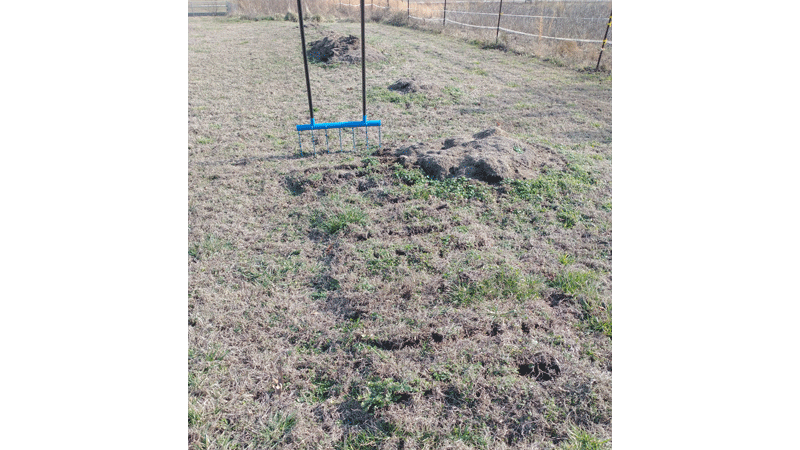Overcoming compacted soil
Published 6:00 am Saturday, February 26, 2022

- Use a full-sized broadfork to aeriate compacted soil. (Photo by Mark C. Carroll)
|
Getting your Trinity Audio player ready...
|
By Mark C. Carroll
What does compacted soil look like? In the picture you can see; it looks like average soil. In fact, I would not have thought my soil was so compacted. I have tried to minimize compaction in this area, but clearly it happened. So, before we get into what practical steps, we can take to combat compaction. Let’s discuss what compaction is and what causes it.
If you want good soil biology, you will need to provide space in the soil for it to exist. Compaction can be described as the lack of space in the soil. With space, air, water, microbes, insects, nutrients and soil life of all types have room to move.
In Anaerobic soil, soil particles are so close together, there is little room for growth or exchange. Traditionally farmers would disc up or turn the soil over in order to create some space, but this practice seems too disturbing to soil biology and many farmers are considering no-till methods.
How does soil get compacted? In short, there are many ways. Rainfall is even among them. One of the more common ways we compact our soil is by driving on it. Whether we are driving across our lawn in our truck or on a lawn mower, we are compacting the soil, some. It seems to me that mostly grass and weeds grow in compacted soils. But, even grass lawn gardeners, need to aerate regularly just to keep the grass growing.
Now that we know what compaction is, what can we do about it. We could try growing through compacted areas. Plants with long deep taproots and even deep-rooted trees can get through some of it. I planted some radishes this fall thinking they would be able to penetrate some of it, however, I haven’t noticed much improvement. So, I purchased a full-sized broadfork. You can see the difference in the image above where I used a broadfork to gently lift and aerate an area where I intend to grow this year. This lifting effect was a little more work than I expected probably because the soil was more compacted than I expected. During the lifts I could tell how tightly bound the soil was by how intact it was when I lowered it. You might say or think, “well, is that enough?’ My answer, I am not sure, however, I can do this same spot next year and ideally it will be looser. The space that I created is filled with air and when it rains it will fill with water, which will put water in closer proximity to where my vegetable roots will be.
Ideally, as the soil biology improves the soil will be looser and easier for plants to spread their roots out. Creating better growth and better quality, more capable of defending against disease and pest pressure. Like opening up some time in your schedule, opening up space in your soil can be where the good things happen.





